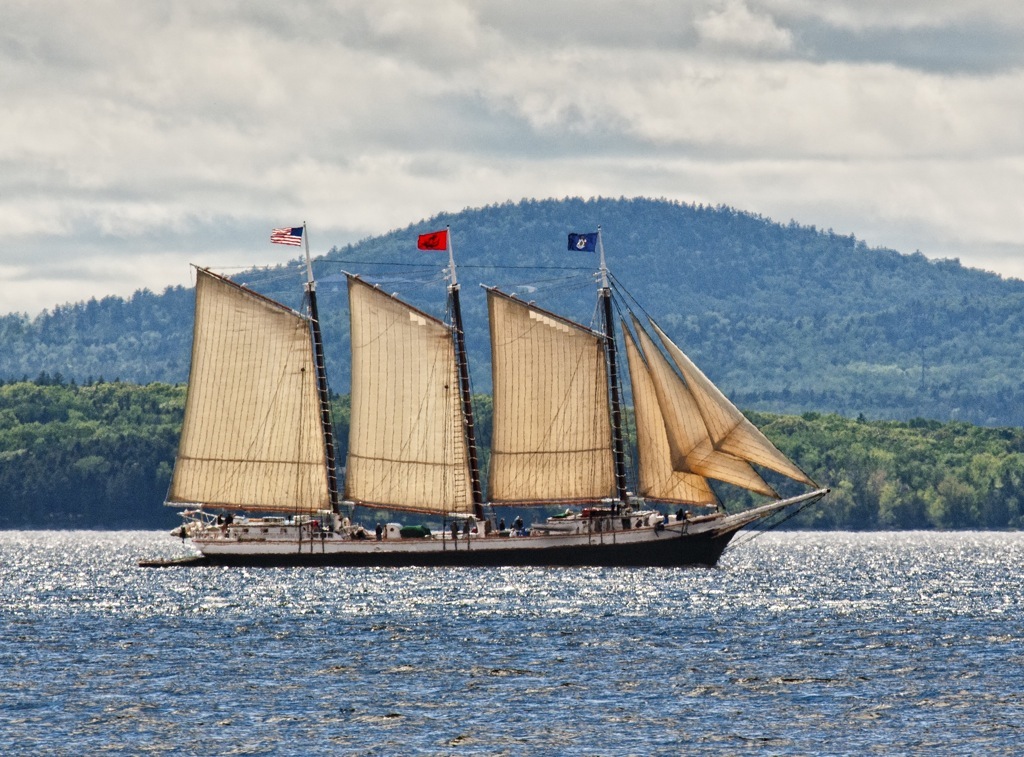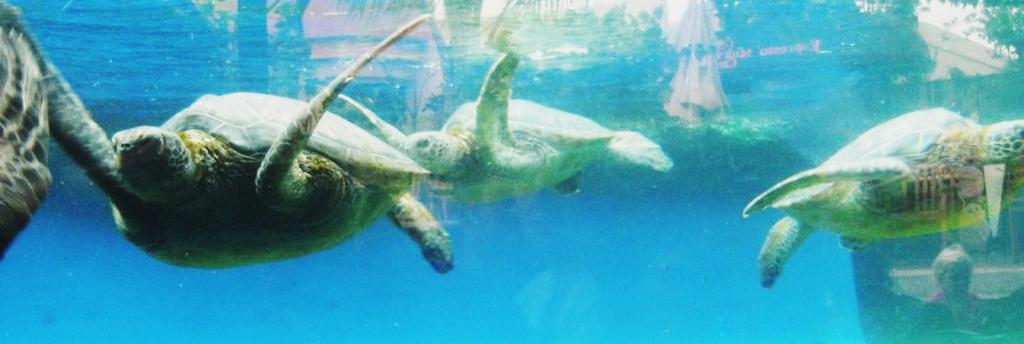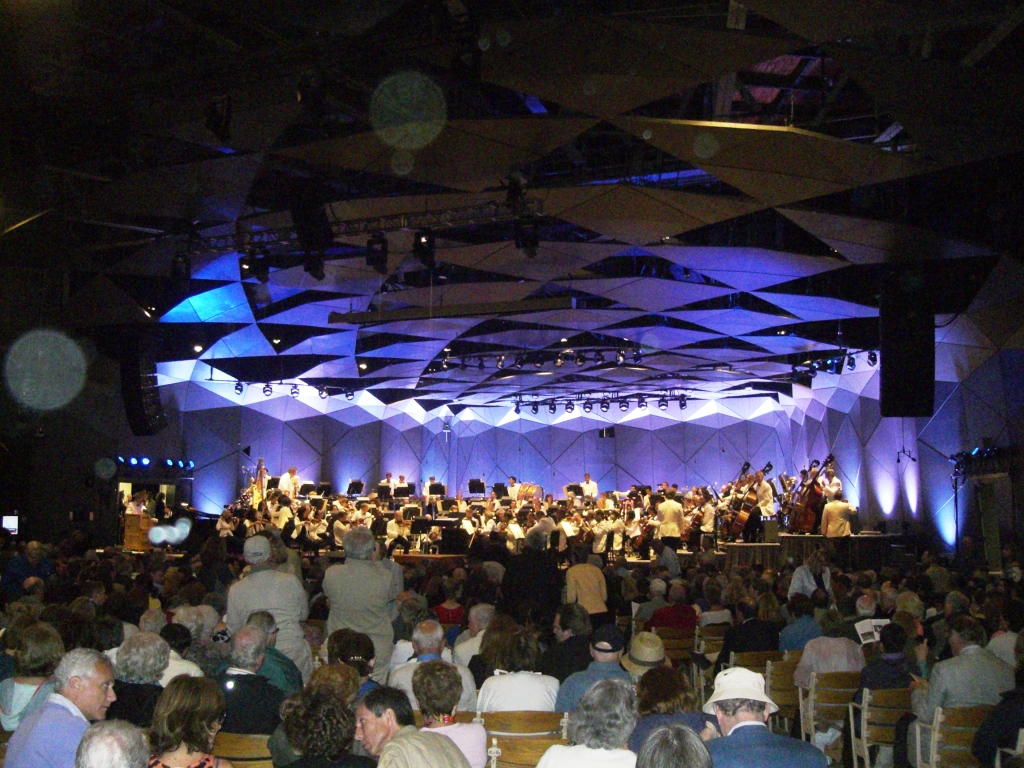Catching the windHere’s what I noticed when I stepped aboard the Victory Chimes for a week-long cruise on the Maine coast. Almost all the cabins are belowdecks, and they are teeny — mostly bunkbeds, so we’re not really talking romantic cruise here. There’s just enough floor space to change clothes. Showers and heads are shared, with the exception of one or two rooms, which have their own. There are some games and books lying about, but all in all, it doesn’t look like there’s much to do: There’s no chance of some cruise ship activities director trying to coerce passengers into a game of shuffleboard. (There doesn’t seem to be enough board to shuffle on, although I’ve since seen an historic picture from 1947 that proves otherwise.)
In Your Bucket Because…
- Slow winds, lazy days, watching the horizon, and eating lobster all put the “vacate” in vacation.
- The beauty of old sailing ships is something people either get, or they don’t: You do.
- Good for history lovers, nautical buffs, and adventurers. Multi-generational family reunions can work, but be sure young kids have lots of games.
One more thing I will learn: Some of my fellow passengers have taken this exact same vacation 10, 20, or, in one case 37 — yes, 37 — times. (At least one passenger has clocked 70 cruises on the Victory Chimes, but she wasn’t on our trip).
What possible vacation (with bunk beds and shared bathrooms, no less) is so memorable that someone would want to repeat it 37 times?
“At the end of the week, you’ll either understand, or you won’t,” one old-timer explained with a smile.
History of the Victory Chimes
“Her cargo used to be lumber; now it’s tourists,” says Captain Kip Files, who along with partner Paul DeGaeta, co-owned and co-captained the 132-foot Victory Chimes until 2018, when they sold it to Sam Sikkema. Originally built in 1900 in Bethel, Delaware, Victory Chimes started life as a Chesapeake Bay cargo ship. Now retrofitted for tourists, Victory Chimes can carry 40 passengers. Based in Rockland, Maine, she is the last three-masted schooner on the East coast, and the largest passenger sailing vessel under U.S. flag.
Victory Chimes is the largest of the tall ships in the Maine Windjammers Association. These ships are each different from the other, ranging in size from the 6-passenger 46-foot Mistress to the Victory Chimes. (The rest of the ships average between 20 and 30 passengers.) Each has its own character, but they all offer a traditional sailing experience.
Victory Chimes has been honored in some interesting ways: She is an American National Historic Landmark and she is also featured on the Maine state quarter, sailing past the Pemaquid Lighthouse. In 2000, the 100th anniversary of her birth, she was named #148 on Boat International USA magazine’s “World’s Top 200 Yachts.”
DeGaeta and Files, who were still the captains when Victory Chimes received that plaudit, were honored to be on the list, but they were a little worried about the public relations impact: They don’t consider Victory Chimes a yacht, and they don’t want you to think of it that way, either. With small simple cabins, shared heads and showers, and communal meals, the experience of sailing on a historic cargo ship is very different than a yacht experience, and probably more appropriate for more adventurous souls. One of the regular repeaters called it “camping on water” which might be an exaggeration, but has an element of truth.
Sailing the Maine Coast
We didn’t have great weather the week I sailed. We were lucky that it didn’t rain much, but a thick fog had the captain and first mate on hyper-alert as they navigated the rocky waters. Sailing the Maine Coast in a thick fog is an almost spooky experience, as the islands emerge out of mist, then seem to fade back into it. On bright days, the sea glistened, and I found my eyesight tricked by a play of light that created convincing mirage islands seemingly just out of reach.
The days blended into a sort of soft-focus film: Occasionally, we stopped at islands for a walk-about, to buy necessities, or to explore local attractions like a boat-building school or a lighthouse. Mostly we all sat around on deck. I stared out to sea, read (but only a little), chatted with other passengers, and participated in goofy scavenger hunts and trivia quizzes the old-timers dreamed up. In the evenings, we enjoyed convivial family-style home-cooked meals in the dining room. (The lobster boil is a regular highlight.)
Passengers are welcome to help with chores. By far the most popular “chore” was “helping” with hoisting the sails, with passengers and crew heaving and hoing as the gigantic sheets were laboriously raised to catch the wind. It was only at the end of the cruise that we were let in on the secret that there’s a perfectly functional mechanical system in place to get the sails up. Our heave-hoing was a bit of play-acting. Helping in the kitchen would have been more useful, but I didn’t see a lot of volunteers.
You would think that a week of doing absolutely nothing would pass very slowly, but it didn’t. I did nothing. I didn’t get bored. The islands passed by. The muscles in my face softened the way they do when I’m not scrunched over a computer, but can instead look out to horizons. I really don’t know where the time went.
As I left the boat, I pondered the idea of taking this vacation 37 times. The world is an awfully big place, and you can’t repeat vacations 37 times if you want to see as much of it as possible.
But I did find myself understanding.
Practicalities
Victory Chimes itineraries range from weekend sails to 4, 5, and 6 day options. She can also be chartered for special events. The season is early June through late September. Destinations are not fixed, and depend on the winds. The only downside is that in an average group of 40, you are in awfully close quarters with your fellow passengers, and an abrasive shipmate can be hard to avoid.





I am the niece of Capt. Frederick Boyd Guild who refurbished the “Chimes: over 65 years ago, and started sailing her as a vacation cruise ship. He was in the Coast guard in WW2, and owned the Stephen Tabor and Alice Wentworth also. I sailed on all three. Many clients returned year after year.
His “boats” were always exquisitely maintained,and the food was wonderful. NOONE played games .It was a different time